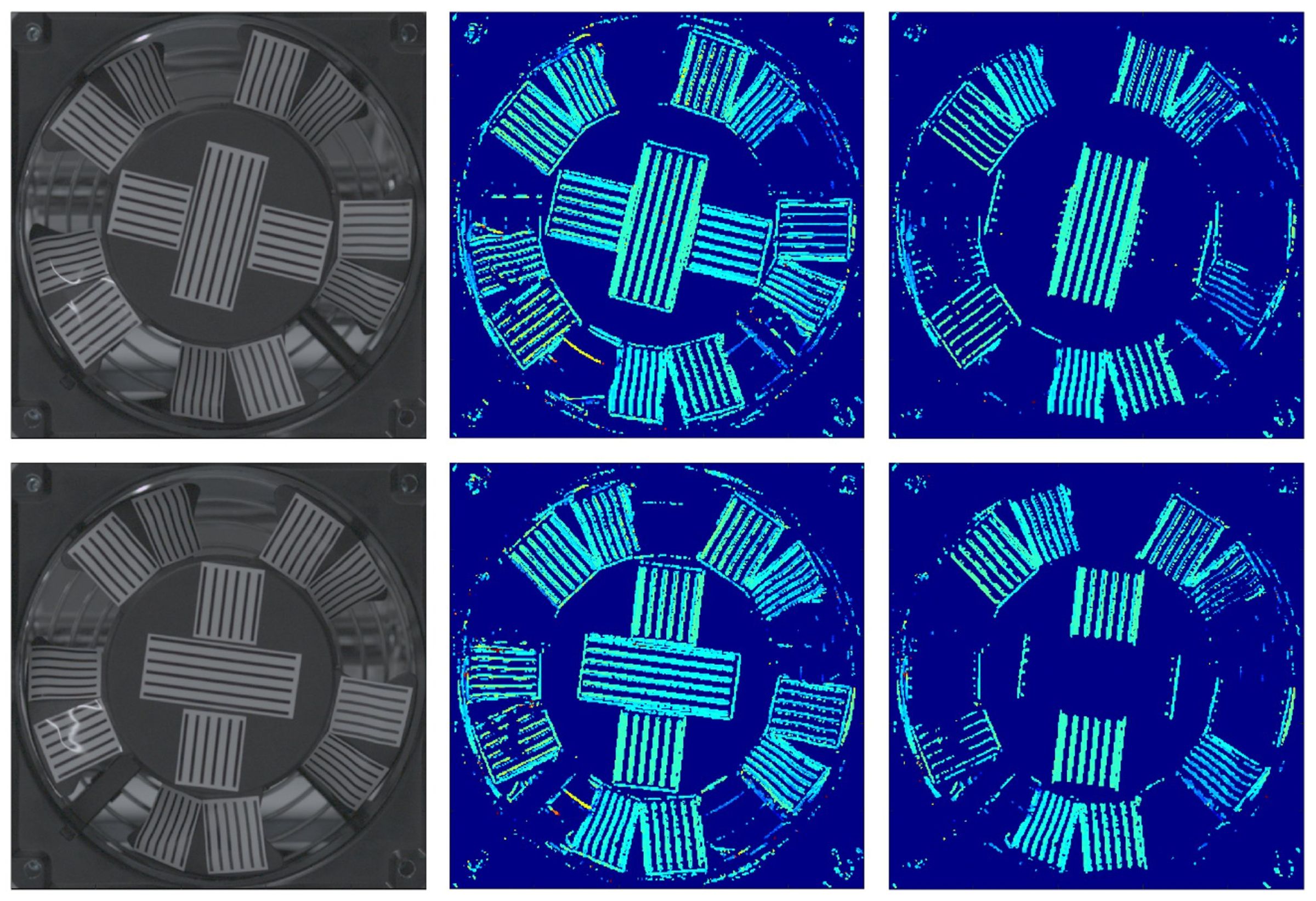IEEE Spectrum has a recent article discussing a 2023 IEDM paper from Canon.
Paper: Shirahige et al., "40-5. Cross Dual-Pixel Twisted-Photodiode Image Sensor for All-Directional Auto Focus", IEDM 2023.
Spectrum article: https://spectrum.ieee.org/autofocus-canon-twisted-diode
Diodes at Right Angles Double Autofocus Capacity: Canon twists photosensor rules to build new tech from familiar parts
Above are images of a rotating object using Canon's twisted photodiode autofocus [middle column] and a standard dual pixel autofocus [right column]. The gray column is the raw image and the top and bottom rows were taken at different times. Courtesy: Canon
In 2013, Canon introduced its first dual-pixel autofocus, a technology that allows almost every pixel in a photo sensor to help focus the image it takes. Now Canon researchers say they’ve developed a new improvement on their previous improvement to autofocus tech. And this new approach finds its focus faster, better, and in lower light—without requiring new components and technologies to be invented first. It simply involves one small twist.
Shirahige said they have developed a new image sensor whose photodiodes are perpendicular to each other. This “cross dual-pixel twisted-photodiode,” they note, performs better than autofocus sensors in the marketplace today [that place] two photodiodes under a shared lens, which allowed the sensor to detect when incoming light on both diodes was in phase, and therefore, in focus. [Even earlier technique was to] sample [a few image] pixels to adjust the camera lens based on the contrast in the image, a slower method. [In any case, the] focusing pixels could not record image data, so there was always a trade-off between autofocusing ability and image quality. Instead, the dual-pixel autofocus approach made it possible for almost every pixel in the sensor to contribute to focusing the lens ahead of shooting, and to then contribute information to the final photo. The advantages included speed, better focus in low-light situations, and better focus across a greater fraction of the image.
However, these multipixel photodiodes have a disadvantage: the arrangement of photodiodes favors light on one axis at the cost of the other. [...]Canon’s new structure, which they call a twisted-photodiode image sensor, stacks two identical photodiodes, one oriented to capture horizontal patterns and the other rotated ninety degrees to capture vertical patterns. Because the horizontally and vertically oriented photodiodes are the same type of components, the data each generates requires no more extra processing time or power than that of any other diode in the system. So the overall autofocus speed is higher. The orthogonal-diode arrangement, by virtue of is comparable simplicity, also achieves faster readouts than more complex quadruple or other elaborate photodiode structures.
Canon’s team reported that their system is also much faster at capturing the electrons transferred from the photodiodes, capturing as many as 121,000 electrons with the same lag as previous photodiodes, which is more than double the capacity of comparable earlier systems.
[Canon did] not provide an estimate of when the technology might appear in commercial systems.

No comments:
Post a Comment
All comments are moderated to avoid spam and personal attacks.